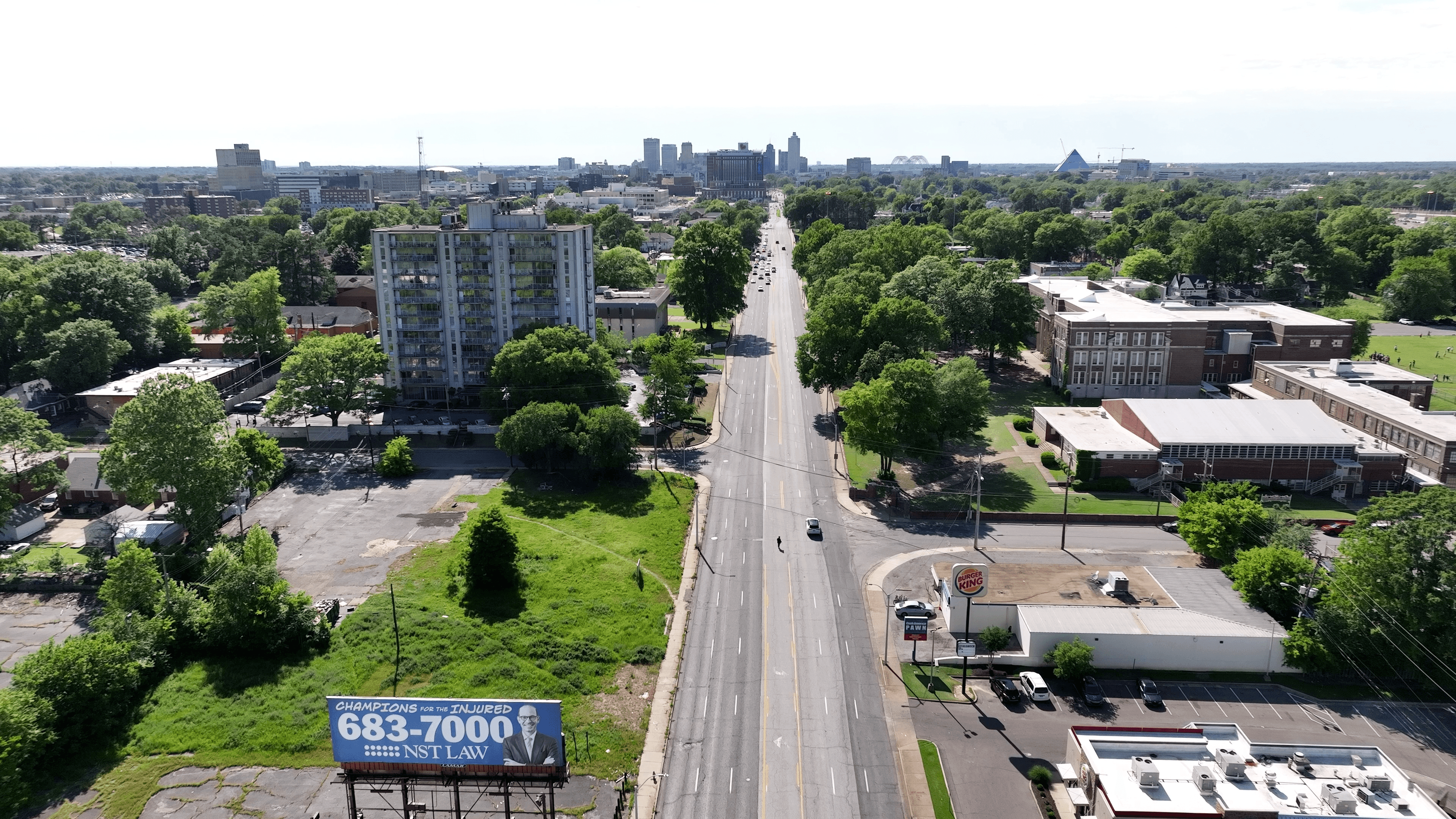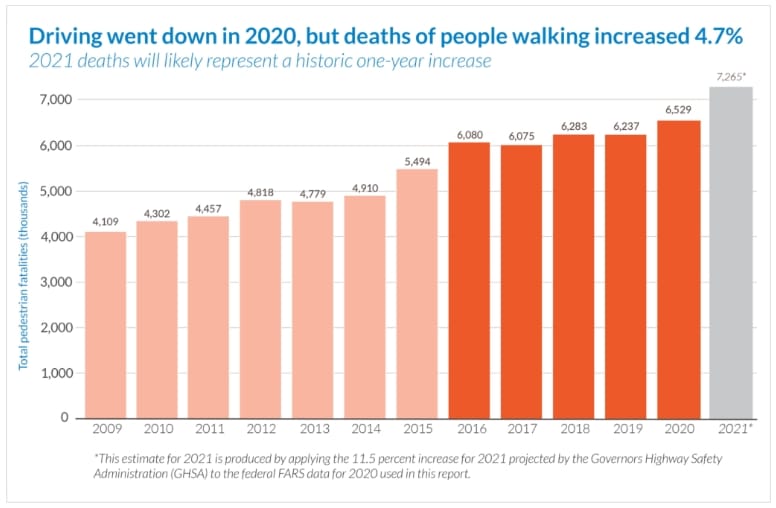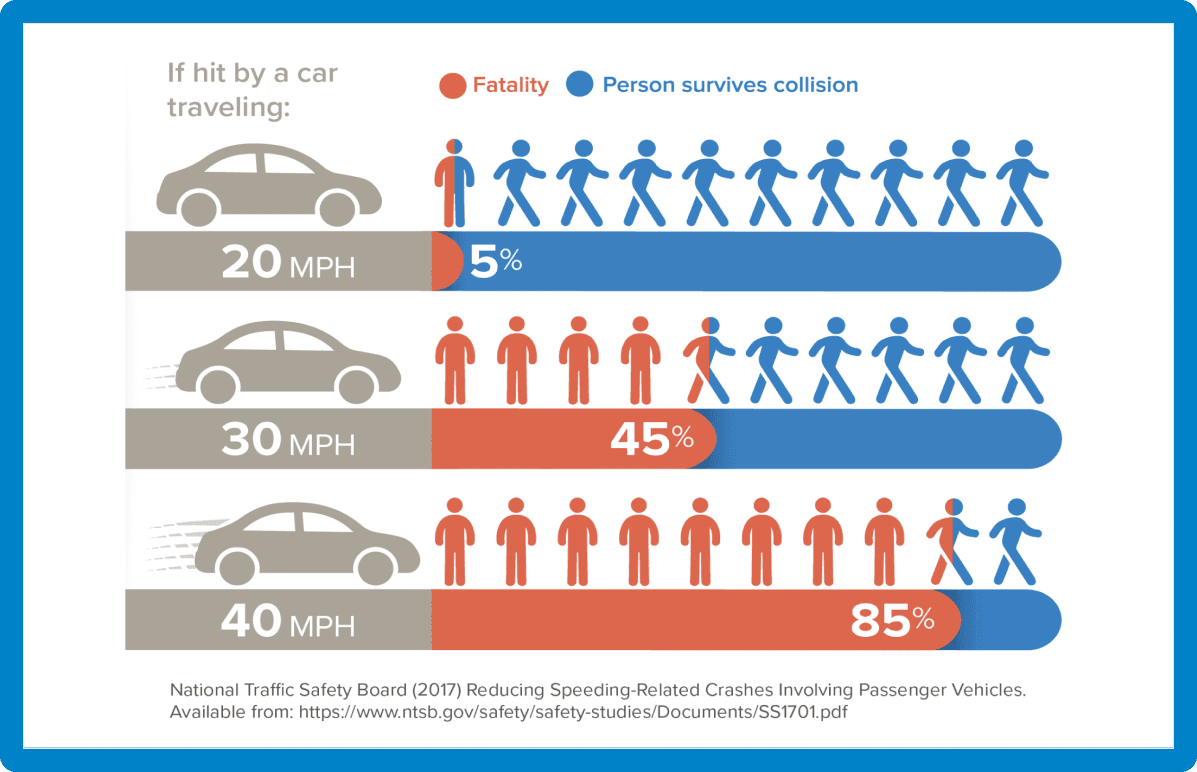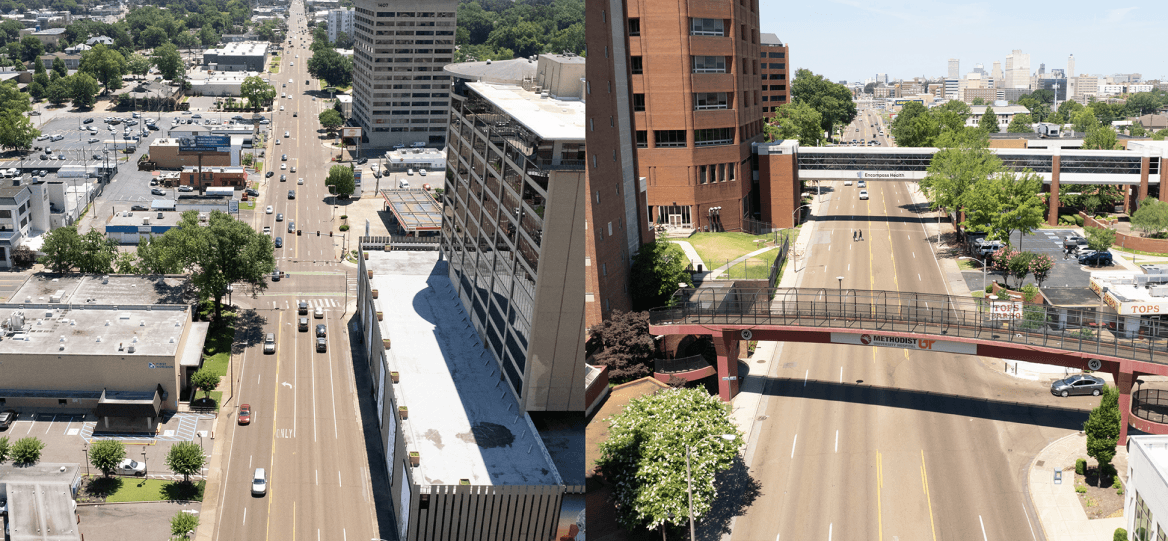
The United States is in the midst of a historic, alarming increase in the numbers of people struck and killed while walking, which has been on a steady rise since 2009, reaching levels not seen in more than 40 years.
Complete Streets Save Lives
We are amid a historic, alarming increase in the number of people struck and killed while walking, which has been on a steady rise since 2009, reaching levels not seen in more than 30 years.

Speed is the number one culprit in traffic fatalities. Speed is also the best predictor of whether or not a collision will result in an injury or a death. (In addition to the size of vehicles, which are rapidly increasing, but that’s another conversation.)
One of the best ways to reduce speeds and speeding is through a different approach to street design that prioritizes safety above all else, but especially over vehicle speed.
Most people don’t realize that speed and avoiding delay for vehicles is the primary consideration for most transportation agencies—thanks to entrenched practices left over from the interstate construction era and political pressures to avoid congestion, especially at the state level. Safety is important, but the default approach to street design places vehicle speed and throughput at the top of the pyramid of priorities.





Here’s a brief real world example of a specific intervention to help make an unsafe, wide street a little bit safer, and help it better serve the needs of everyone who needs to use it:
Roadway design significantly influences driver behavior, often more than speed limits. Streets prioritize car flow over safety, contributing to these issues.
Our newest edition of Dangerous by Design has “design” in its name, but what do we mean when we say that street design is a large factor responsible for this epidemic of deaths?
